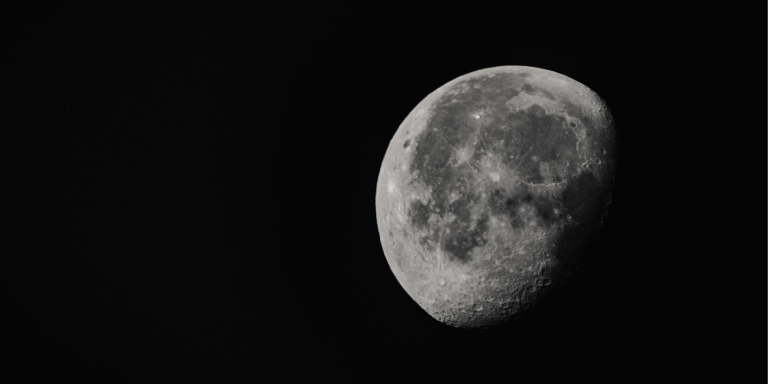
NASA’s Artemis program aims to send astronauts to the south pole of the Moon, where water in the form of ice has been confirmed, rather than near the equator as with the Apollo mission. The dark areas are likely to contain more ice than the others but also to be dangerous for the astronauts venturing there. A team of researchers studied these areas using deep learning, the study entitled “Cryogeomorphic Characterization of Shadowed Regions in the Artemis Exploration Zone” was published in Geophysical Research Letters.
For the first Artemis lunar missions, the selected astronauts (one man and one woman) will fly to the south pole of the moon. This region has a great potential, it is thought to have the greatest abundance of water ice because it has craters where the sun’s rays never penetrate, their temperature is estimated at -170°.
If this water could be extracted, it could be used to support space exploration, especially to Mars, whether as a source of human hydration, a rocket fuel resource or a cooling system for equipment.
Cryogeomorphic characterization of shaded regions in the Artemis exploration area
V. T. Bickel, B. Moseley, E. Hauber, M. Shirley, J.-P. Williams, and D. A. Kring are the authors of this study.
The study is based on research involving Valentin Bickel, then a postdoctoral researcher at the Max Planck Institute for Solar System Research (MPS) in Goettingen, Germany. The researchers had developed an AI algorithm called “Hyper-effective nOise Removal Unet Software” (HORUS) to clean up noisy images of the background of unlit craters collected by other spacecraft, such as the Lunar Reconnaissance Orbiter (LRO) and correct for other factors, including the motion of the LRO itself.
Currently, most science and mission planning efforts for a crewed mission and a number of robotic missions, are focused on a ridge adjacent to Shackleton Crater, a huge 12 mile (19kms) depression. This area is of great interest to NASA, first, a permanent shadow is cast in the crater’s troughs, the low temperatures make it a promising place for ice formation and second, two topographically high points on the ridge have been identified that could provide optimal illumination and direct communications to Earth.
Due to the lack of primary illumination, permanently shaded regions (PSRs) are difficult to image with high-resolution optical sensors. Yet, a detailed knowledge of their cryo-geomorphic characteristics would allow :
- Identification of science targets, including small double-shaded regions, i.e., regions protected from primary and secondary lighting, especially cold regions, and potential hazards in target SSRs;
- The planning of efficient and safe crossings through the target PSRs, including the PSR terminator, i.e., the sun-shade transition zone;
- The overall reduction of the associated risk of operating in permanent shadow;
- The contextualization of science measurements made by future ground and orbital missions.
To fill this gap, researchers deployed the Lunar Reconnaissance Orbiter (LRO) narrow-angle camera (NAC) post-processing tool, HORUS, to produce high signal-to-noise ratio (SNR) and high-resolution images of selected shaded regions in the Artemis exploration area.
As a result, HORUS removed noise from 200,000 images, enabling characterization of the meter-scale geomorphology of 44 PSR regions larger than 40 meters in diameter, including surface texture, fresh craters, rocks, and relative age, and ultimately recommending potentially promising target PSRs for future missions.
Article sources:
“Cryogeomorphic Characterization of Shadowed Regions in the Artemis Exploration Zone.”
Geophysical Research Letters , https://doi.org/10.1029/2022GL099530
Authors:
- V. T. Bickel, ETH Zurich, Switzerland;
- B. Moseley, University of Oxford, UK;
- E. Hauber, German Aerospace Center, Berlin, Germany;
- M. Shirley, NASA Ames Research Center, Mountain View, CA, USA;
- J.-P. Williams, University of California Los Angeles, USA;
- D. A. Kring, Lunar and Planetary Institute, USRA, Houston, TX, USA.
Translated from Le deep learning pour explorer les zones sombres de la lune









